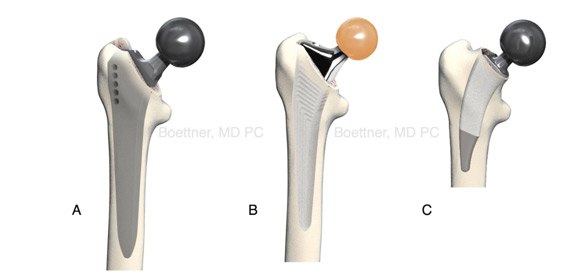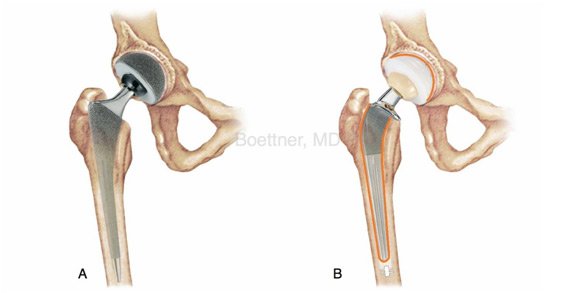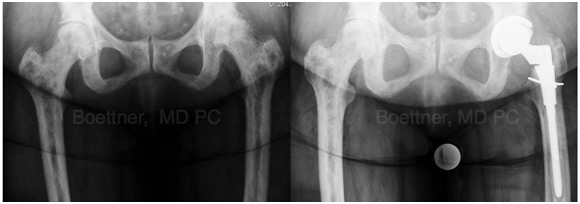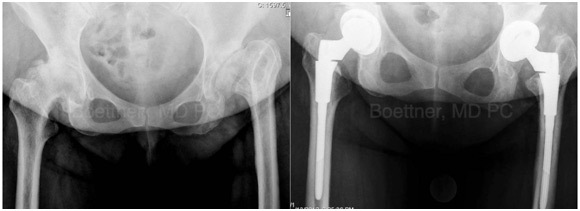The posterior approach is one of the most versatile approaches for a total hip replacement. It can be performed with a 7-10 cm incision and usually requires minimal soft tissue trauma. The approach allows Dr. Boettner to use any implant (standard femoral component (A), anatomic stem (B) or short stem (C))

and to fix the components without (A) or with cement (B).

Because the approach can be easily extended it is ideal for patients with complex deformities. The following image shows x-rays of a patient with sickle cell disease. This condition will often result in bone formation within the femoral canal and often requires the use of burrs and drills to open the canal and implant the components. This type of procedure can only be performed from a posterior approach.

Other conditions like hip dysplasia might be associated with excessive femoral anteversion. This can be easily corrected using a modular implant, however because the canal has to be reamed this can not be done doing an anterior approach.

In our own experience the incidence of complication with the posterior approach is very low. We do observe hip dislocations in less than 1% of our patients with this approach (1:150) and after 4 weeks there is often no difference between a minimal invasive posterior and anterior approach. However we do not allow patients with a posterior approach to drive within the first 4 weeks and we also ask every patient to observe hip precautions for 4 weeks (do not bend the hip beyond 90 degrees). If you need to drive earlier please discuss the option of an anterior hip replacement with Dr. Boettner.






